Top 10 Mind Blowing Facts About Tornadoes
Yeah, yeah, yeah. I gave in to using a lazy-ass pun for another natural disaster list. I'm sure it's quite possible you are getting tired of them, so this will be my last one for a while, although I have other ideas in other categories. Anyway, here are some mind blowing facts about tornadoes.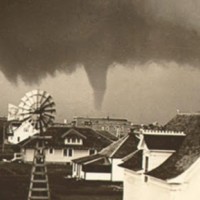
It's hopefully not surprising that this happened in Kansas, seeing as that is more or less the heart of Tornado Alley, but surprising that it happened three years in a row. The first one hit in 1916, probably around 7:00 pm to 9:00 pm. The second one hit in the western part of Codell (the precise timing remains unknown to me), and in 1918, a third tornado struck perhaps around 6:00 pm to 8:00 pm. All three of them happened on May 20th. Weird but cool. You can't make this stuff up.
That's a horrifying coincidence. Talk about an unlucky number.
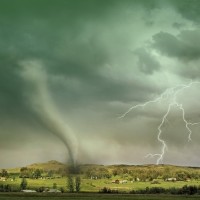
Often times, right before a tornado comes, the sky may start looking a shade of sea green, which is caused by the reflection of the sun on pellets of hail. The sky may also darken before a tornado comes, because there is usually a direct correlation between tornadoes and thunderstorms.
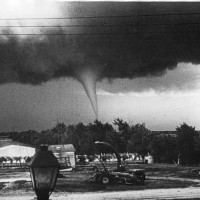
We call this the Tri-state Tornado. It hit Missouri, Illinois and Indiana, way back in March 18, 1925. Technically speaking, it had no category, as we didn't rank the severity of natural disasters, back then, but if we did, it would be an F-5 tornado, making it one level away from being like an apocalyptic level tornado. The tri-state tornado traveled at over 70 miles per hour, lasted over three hours, and caused almost 700 deaths.
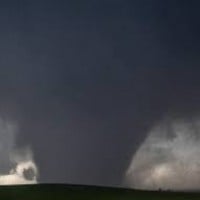
A wedge tornado is broader and wider than its height. It's the largest and most destructive twister. They're usually F-3 tornadoes. With a width of a bit more than half a mile, it can leave a trail of destruction when it passes. They take forms of upside down triangles, and even the best storm chasers and meteorologists might not be able to tell the difference between a lower than usual cloud and a wedge storm
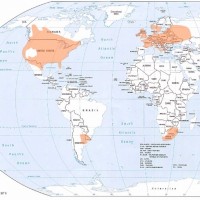
We, the people of the United States, not only are subject to hurricanes (which mostly occur in Texas and Florida), but we also live in the nation with the most tornadoes. We have received over a thousand tornadoes in the past decade, due to the tropical air that the Gulf of Mexico exerts combined with the arctic air that we get from Canada, Alaska, and the northeast part of the States. Most of these occur in tornado alley (Texas, Oklahoma, Kansas, Nebraska and the Dakotas), although there have been tornadoes in every other state, including Alaska and Hawaii.
Yeah, that's contradictory to "It's possible for a tornado to occur in Antarctica", at first, but considering how hard it is for Antarctica to get a tornado, to begin with, one has never been recorded in the icy tundra of Antarctica. Just about all of Europe, southern Africa, in southern Brazil, China, and the United States as well as various parts of Canada. It's possible for a tornado to form in Antarctica. Just not very likely to form without turning into a blizzard.
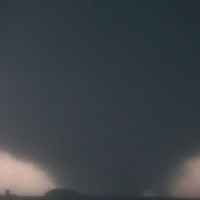
The El Reno tornado of 2013 was statistically the largest tornado recorded, with winds at about 300 miles per hour at most, as well as a max width of 230, but it only lasted about 40 minutes, and was an F5 tornado. In contrast with the Tri-state tornado, this twister was not much, but it probably just looked like a huge cloud, at first.
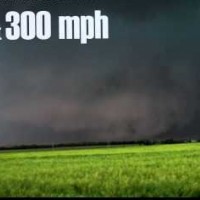
The strongest tornadoes can make winds of roughly 300 miles per hour which can of destroy anything but specially designed, tornado-proof structures. Tornadoes this strong are very uncommon but from time to time, they happen.
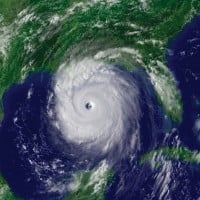
Ah, yes. Hurricane Katrina did more damage than let on. You thought it was just an awful hurricane, but no, it caused 57 tornadoes. All of them were on the weaker end of the Fujita scale (F2 at the most), but collectively caused havoc and destruction throughout Louisiana, Mississippi, Alabama, Georgia, the Carolinas, Tennessee, and Pennsylvania. This series of tornadoes lasted from August 26th to August 31st. Much to my surprise, when I got into doing my research, only one death occurred.
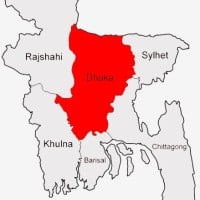
The Daulatpur-Saturia twister that decimated Bangladesh on April 26, 1989, was the tornado with the highest death toll in Bangladesh, and perhaps the highest death toll out of all known tornadoes. It caused the deaths of roughly 1,300 people and injured about 12,000. Not to mention it caused extra damage by pulling trees right out of the earth and wipe out houses within the range of its path. This tornado also left about 80,000 Bangladesh people became vagabonds.
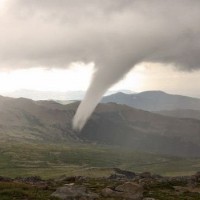
Despite what has become a common belief, tornadoes can go through mountains and mountain ranges. It's true that tornadoes don't commonly occur in rocky areas (the Rocky Mountains for instance), but it's due to the cooler breezes are more consistent in rocky areas. An example is on July 21, 1987, a grand but deadly twister blew through Yellowstone National Park, and to this day it's the most deadly tornado recorded in the state of Wyoming.
